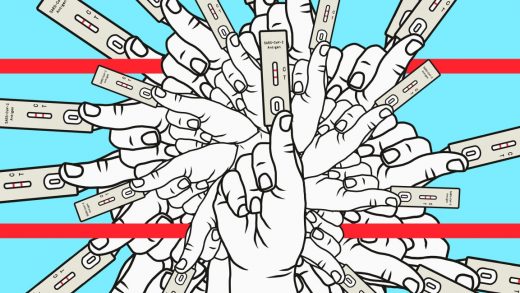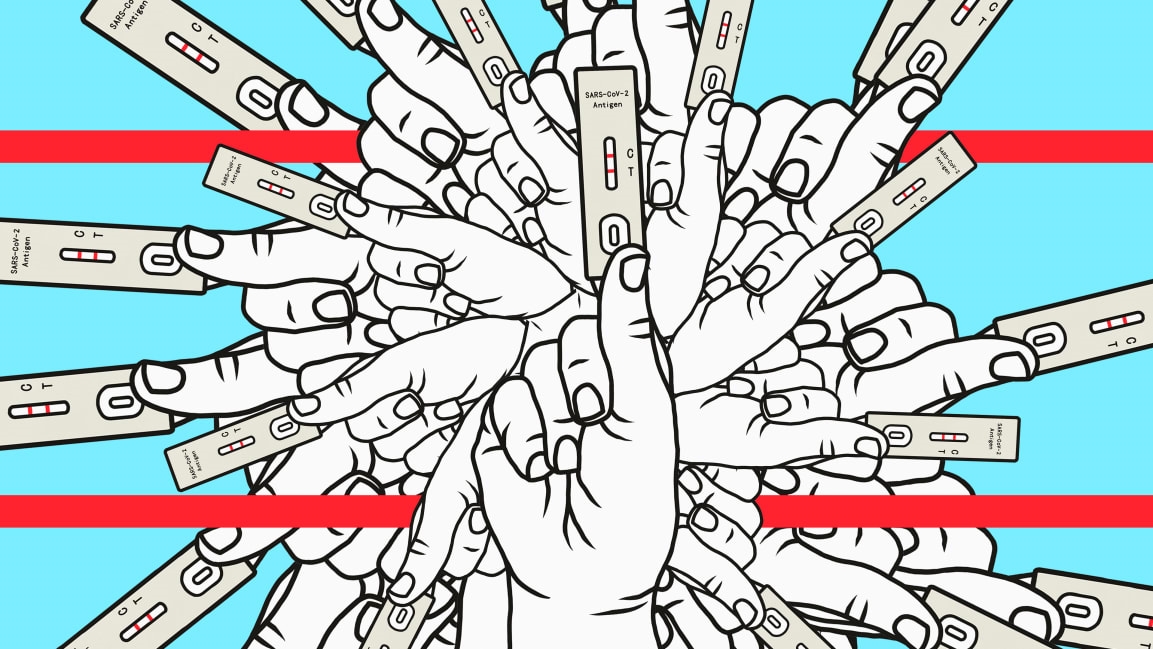Getting together for the holidays? This is when you should take a rapid COVID test
As omicron variant cases surge, some people are rethinking their holiday plans. But if you’re vaccinated and boosted and planning to travel to see family and friends, there’s a simple tool you should probably be using: rapid COVID tests.
The key is to take the test at the right time. Omicron moves quickly; you can go from having an undetectable amount of virus in the morning to peak antibody levels by the end of the day. “The best time to test is always just before you’re wanting the benefit of knowing you’re negative,” Michael Mina said in a recent interview with Fast Company. Mina is chief science officer at eMed, a digital point-of-care company that works on at-home testing; he recently left Harvard Medical School and Harvard School of Public Health for eMed. “So if you’re going to dinner with friends, or you’re having people at your house, use a test right before dinner. Don’t use it 24 hours before or 72 hours before. That generally is far too long.”
Lab-based PCR tests, the other common type of COVID test, typically take days to return results. (Some companies, like Worksite Labs, do offer 12- to 24-hour turnaround—or in as little as 90 minutes in some locations.) Going to get an in-person test also means standing in line with other potentially infected people. If you managed to stock up on at-home tests, they’ll be ready when you need them, though they are largely sold out around much of the country. Once they come back online, they’re a good thing to have around. “It’s like Band-Aids,” Mina says. “We don’t wait until our child is bleeding on the floor because they’ve cut their knee to go out to CVS to buy Band-Aids. We have them in the house because we know we’re going to need them at some point.”
Because of omicron’s speed, the CDC now requires that international travelers take a test within 24 hours of travel to the U.S.; Mina says that ideally it would happen within six hours of getting on a flight. And when you’re about to spend time with your grandmother, or nephews and nieces who are too young to be vaccinated, the best time to take the test is immediately beforehand. The tests take 15 minutes to return results.
Rapid tests, which work by detecting antigens that the body produces in response to the virus, work well at identifying COVID at the most critical time—when someone is currently infectious. (The tests also work well to detect omicron, specifically, because the mutations in the virus haven’t affected the way the tests work.) If you’re infected and vaccinated, there might be a short period where your immune system kicks in and you have symptoms but it may not yet show up on a test. If you have symptoms, Mina recommends assuming you have COVID, quarantining yourself for a day, and then taking a rapid test the next day. The tests typically come in two packs, so if it doesn’t show COVID the first time, take another test in the next day or two.
Negative rapid test, then Covid positive?
My friend @michaelmina_lab‘s graphic adapted @FT by @jburnmurdoch https://t.co/bbfENh3PjN pic.twitter.com/jJYMaLADv1— Eric Topol (@EricTopol) December 20, 2021
The tests aren’t cheap—a pack of two BinaxNow tests costs $24 at Walgreens, if you can even find them. Beginning in January, the Biden Administration plans to make half a billion free rapid tests available for Americans, which they’ll be able to get through a website, something that Mina has been calling for since the tests were first created. (He also advocates for the approval of more of these tests, as public health tools, to help bring costs down.) In an ideal world, mass testing would happen in a more strategic way to stop the spread of COVID at a broader scale, and the tests would have been available sooner, so more people would have them on hand before holiday travel. But sending out free tests for personal use is also an important step. “Nobody should have to pay money to participate in public health, period,” Mina said in a recent press conference.
Fast Company , Read Full Story
(34)



